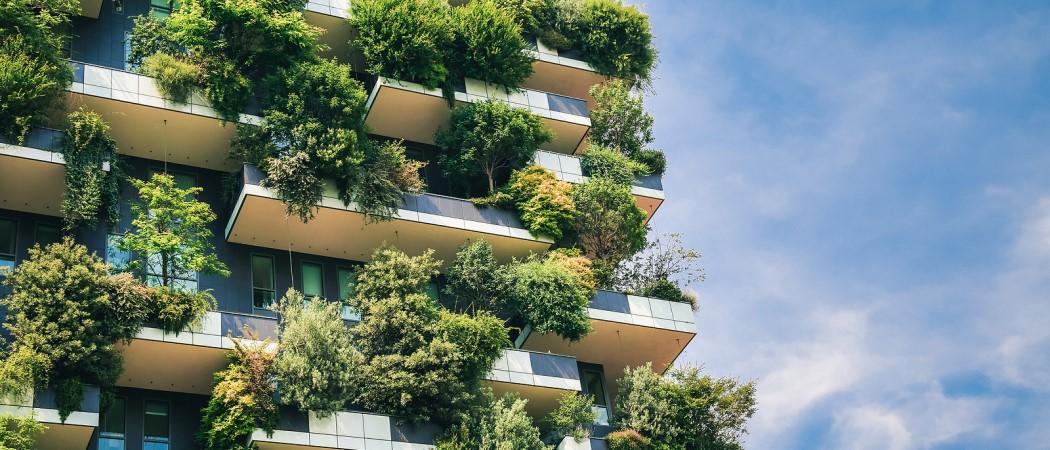With the first grants now awarded and €85M allocated for next year, the Bauhaus initiative to mesh the Green Deal on climate change with the preservation of Europe’s cultural heritage is taking shape

The European Commission has awarded the first 20 New European Bauhaus prizes, finally putting some flesh on the bones of the initiative and providing initial illustrations of how Europe can green its built environment without compromising on aesthetics.
The first winner is Ulia Garden, a volunteer project to turn an abandoned plant nursery in Spain’s Basque Country into a community park. The prize means recognition and will give the volunteers a foothold to fight local council plans to use the land for new buildings. There’s also hope it will bring more people and fresh perspectives to the project. “We know how to flow with different points of view,” the collective’s representative Clara told Science|Business.
Martin Rauch from Austria collected an award on behalf of the Erden Pure Walls project, which is being run by his company, Lehm Ton Erde. It involves using earth excavated from local building sites as a construction material, by mixing it with sand, gravel or clay, and moulding it using a specially developed machine.
The process replicates the way houses were built before the industrial revolution, but with a modern twist. “I want to take the very old technique of earth construction and develop new tools to make it easier to build; and build in a modern way and design,” Rauch told Science|Business. “We go back to the old way, but in a modern way.”
These two were among the twenty winners across different categories who went on stage to collect their prizes on Thursday. Many were emotional, and almost all stressed the importance of taking climate action seriously. One contestant asked attendees to hold a minute of silence for past and future victims of climate change. Another one expressed the need for bigger change, pointing to the flawed capitalist economic system which taxes craftsmanship, but not carbon emissions.
Clara from Ulia Garden pleaded with the European Commission to make a real change with the new Bauhaus movement. “Please, European Commission and European Union use this power to put life at the centre, to make it sustainable and make it real,” she said.
Many of the projects, which were awarded between €15,000 and €30,000, are architectural initiatives, such as modular buildings for overcrowded, gentrified areas. Others are concerned with education and re-imagining public spaces. There were also ideas for green materials and blockchain apps that award users for sustainability.
Bringing the New Bauhaus to life
It is now a full year since the New European Bauhaus was announced by European Commission president Ursula von der Leyen in her first state of the union address.
But until the first project awards this week, there was a lack of clarity about the true nature and objectives of the scheme, and of exactly how innovation and culture would be brought together to accelerate the green transition in sectors such as construction and textiles.
“I’m convinced that the New European Bauhaus combines the big vision of the European Green Deal with tangible change on the ground, change that improves our daily life,” von der Leyen said at the prize ceremony.
Following on from the awards, the first calls are to launch by the end of the month, with a total of €85 million allocated to New European Bauhaus over the next year.
This will be largely funded through the Horizon Europe research programme, the LIFE programme for climate action and EU regional funds. At the same time, New European Bauhaus is categorised as a horizontal action that other EU programmes are supposed to incorporate “as a contextual element or priority.”
The EU research commissioner Mariya Gabriel told Science|Business she hopes to see groups of scientists, innovators, artists and activists, working together. “The aim is to stop this work in silos, to work together, to have real synergies, in a very concrete way. The New European Bauhaus brings together people and sectors that would not link spontaneously to each other.”
Coinciding with the project awards, the Commission published a communication on New European Bauhaus following the end the design phase, in which it gathered ideas from around Europe on how the initiative should be shaped.
The first big call, worth €25 million, will fund five demonstrator projects. In addition, there is €10 million for social and affordable housing demonstration projects. The money for the demonstrators will come from Horizon Europe, and there will be a further €20 million from Cohesion funds for other projects.
In October, the European Institute of Innovation and Technology will join in, with a budget of €700,000 to identify and back start-ups and scale-ups that support New European Bauhaus objectives. “I can’t imagine that we could have disruptive technologies that are affordable and accessible for people without investing in those start-ups,” Gabriel said.
Beyond 2022, New European Bauhaus will work with the Horizon Europe missions that are due to launch later this month.
Like Bauhaus, the missions will be funded through Horizon Europe and other EU programme, but the long-term plan is to convince member states to invest using money from the pandemic recovery plan and cohesion funds.





 A unique international forum for public research organisations and companies to connect their external engagement with strategic interests around their R&D system.
A unique international forum for public research organisations and companies to connect their external engagement with strategic interests around their R&D system.